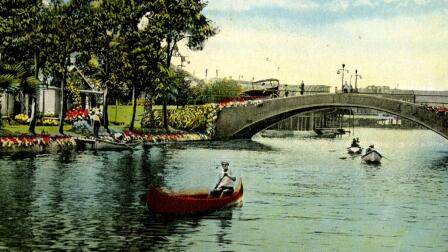Back to Show
Lost LA
Red Gold: The Demise of California's Redwood Forest
In the course of its relentless growth, Los Angeles paved over its local prairies and drained its wetlands. But the city’s ecological destruction extended far beyond Southern California. Take the once-mighty temperate rainforests of California’s redwood coast. Only five percent of the state’s old-growth redwood forests now remain – a fact for which Los Angeles deserves a great deal of blame. In the early 20th century, the port of Los Angeles was a leading importer of redwood lumber, the choice building material for the residential structures of Angelenos who saw little connection to the city’s adobe past. Today, beneath the painted clapboard of Angelino Heights’ Victorian mansions, stand skeletons of redwood timber.











